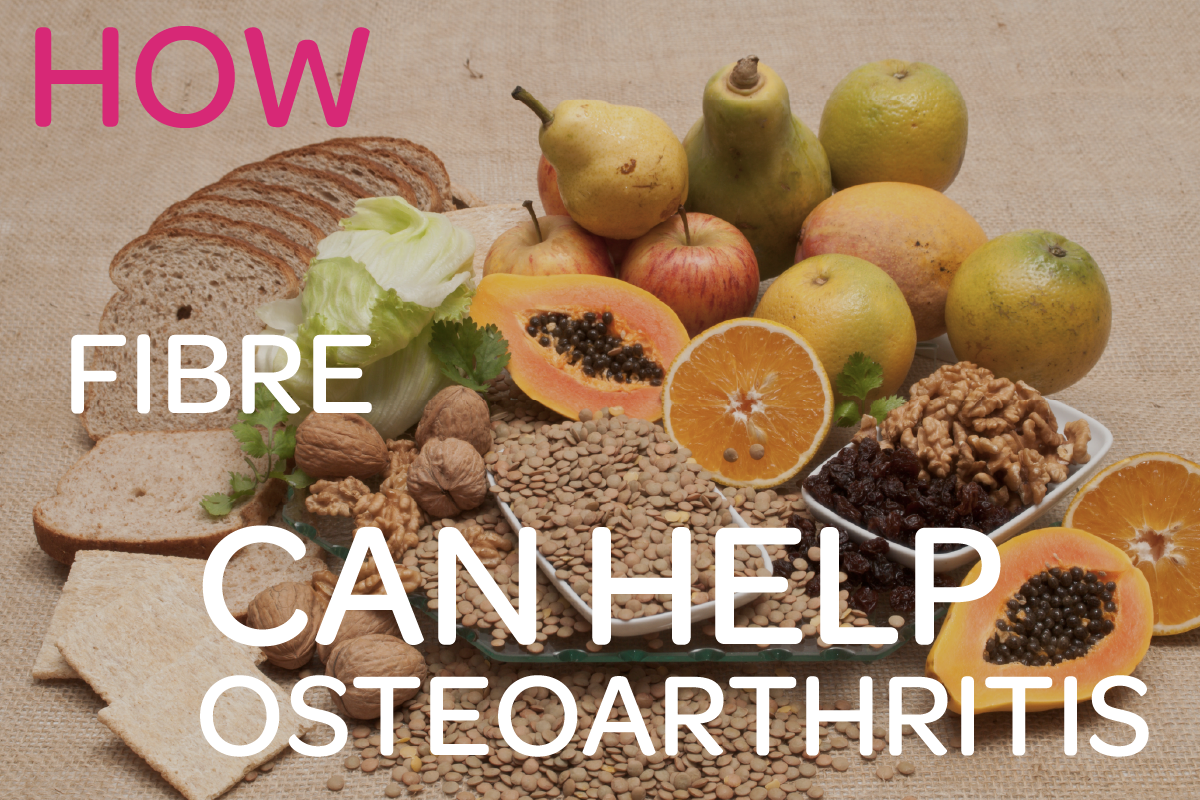It can feel discouraging to realise that the things you used to do with ease are getting harder due to osteoarthritis. The good news is that there are changes you can make to your lifestyle to help manage pain and even slow down the damage to your joints.
Many people are not actually eating enough fibre – according to the NHS, most adults should be aiming to eat around 30g of fibre a day, but on average are only eating closer to 20g! Read on to learn more about how dietary fibre works to help with osteoarthritis and joint pain.
What is Osteoarthritis?
Osteoarthritis is the most common form of arthritis, affecting millions worldwide. It happens when the cartilage in your joints breaks down, leading to pain, stiffness, and even reduced mobility. While age and genetics can play a role, healthy lifestyle choices, including diet and exercise, can really help to manage symptoms.
What Fibre Is and the Role It Plays in Your Overall Health
Fibre is a carbohydrate found in plant-based foods which cannot be fully digested by your body. It offers many benefits, such as helping to support digestive health, maintaining balanced blood sugar, promoting cardiovascular health, and helping lower inflammation.
There are two kinds you need to know about: soluble and insoluble.
- Soluble fibre dissolves in water in the intestines, creating a gel-like substance that adds bulk to stool.
- Insoluble fibre does not dissolve but helps to draw water to the stool, softening it and making it easier to pass.
These functions can help support weight maintenance and lower inflammation in the body.
5 Ways Fibre Can Help Osteoarthritis
1. Helps to Reduce Inflammation
Gut health is tied closely to inflammation in the body, and inflammation is a major factor in osteoarthritis pain. An unhealthy gut microbiome can allow inflammatory compounds to enter the bloodstream, causing pain and inflammation all over the body. Following a diet that reduces the effect of those compounds can be very beneficial for those suffering from joint pain.
2. Helps with Weight Maintenance
Fibre can help you lose or maintain your weight, which means less pressure on weight-bearing joints such as your hips and knees. There are a few ways it can help with this, including helping you to feel fuller for longer on fewer calories and lower fat, slowing the absorption of nutrients as they pass through your digestive system, or even lowering your appetite.
3. Lowers Risk of Cancer
Eating plenty of fibre can help you lessen your risk of developing a number of serious illnesses, including some types of cancer. By regulating bowel movements, fibre can both increase stool volume, diluting harmful carcinogens in the intestines, as well as moving them through the digestive system faster and decreasing contact with intestinal walls.
4. Supports Heart Health
A high-fibre diet, especially with soluble fibre, has been shown to lower cholesterol, and reduce blood pressure. This helps lower the risk of heart disease, which is important given that people with osteoarthritis are almost three times as likely to develop cardiovascular disease or heart failure.
5. Helps Stabilise Blood Sugar
Soluble fibre slows the digestion of carbohydrates, reducing post-meal blood sugar spikes and can even help to improve insulin sensitivity. This steadies your energy levels, and can indirectly benefit your joint health through the previously discussed benefits of weight management and reduced systemic inflammation.
So, while you might wonder how a high-fibre diet can support your joint health, research suggests that it can make a huge difference, especially by improving gut health.
Sources of Fibre
There are many delicious high-fibre foods you can incorporate into your diet to meet your needs. Soluble fibre is most commonly found in fruits and vegetables, while insoluble fibre can be more easily found in grains and legumes. Here are some changes you can make to bring more fibre into your diet:
- Swap refined grains for wholegrain – try swapping white bread and white rice for wholegrain bread and brown rice.
- Try adding some legumes into the food you already eat. Lentils and black beans or kidney beans can help increase the volume of your meals, are low in fat, and can help you feel fuller.
- Snacking can be an easy way to bring fibre into your diet. For example, nuts can be a good source of fibre, and carrots and hummus are too.
- Leafy green vegetables like spinach and kale are really versatile and can help to up your fibre intake.
- Some seeds including flaxseeds and chia seeds provide loads of nutrients including fibre.
Fibre isn’t the only diet-based change that you can make to help manage osteoarthritis and joint pain. Making sure that you’re consuming enough high quality protein can also really help with keeping the muscles around your joints strong, and help to maintain the health of your cartilage.
Please always remember to consult with your doctor or healthcare professional if you’re considering significant changes to your diet.




